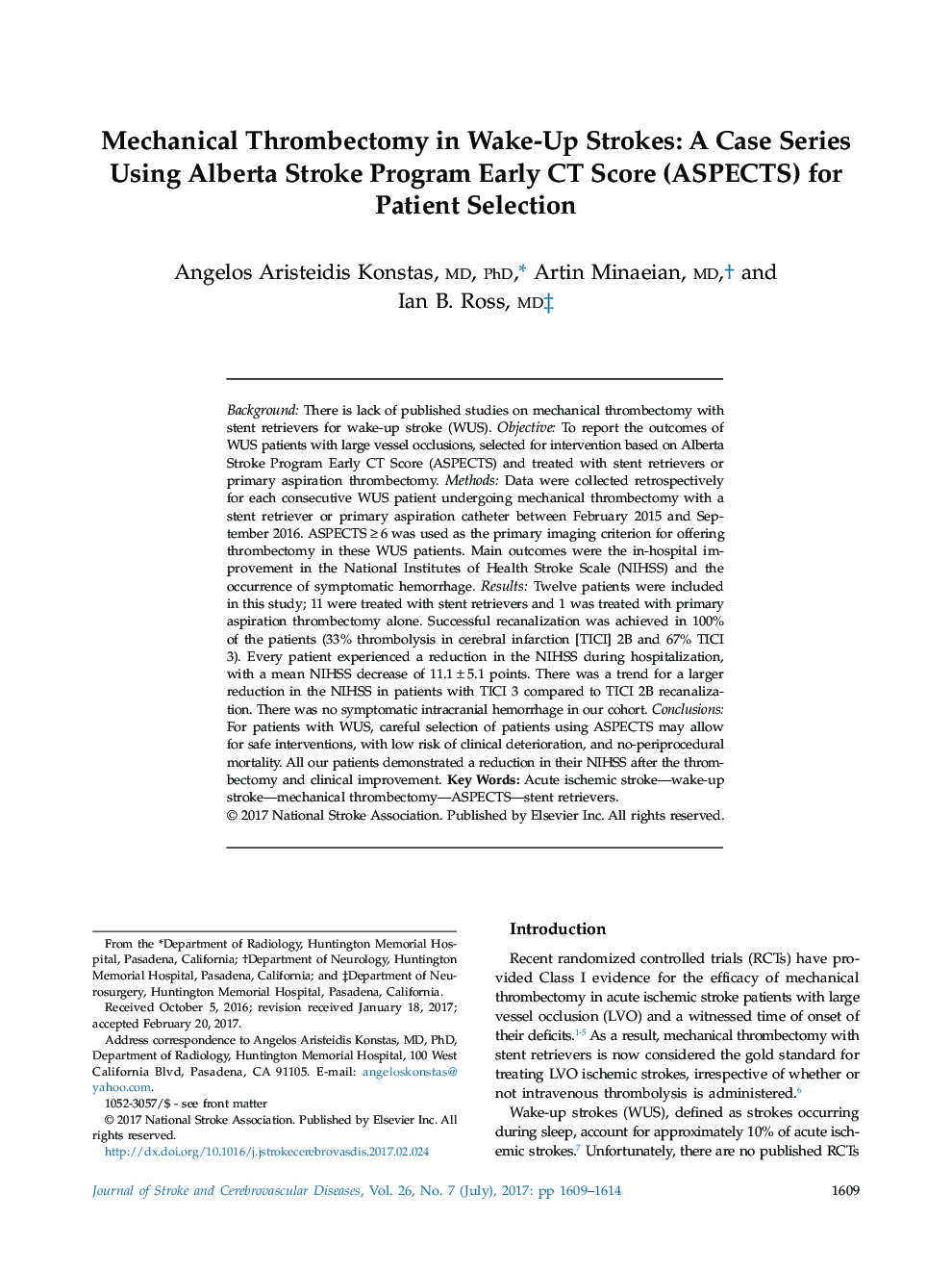| Article ID | Journal | Published Year | Pages | File Type |
|---|---|---|---|---|
| 5574765 | Journal of Stroke and Cerebrovascular Diseases | 2017 | 6 Pages |
BackgroundThere is lack of published studies on mechanical thrombectomy with stent retrievers for wake-up stroke (WUS).ObjectiveTo report the outcomes of WUS patients with large vessel occlusions, selected for intervention based on Alberta Stroke Program Early CT Score (ASPECTS) and treated with stent retrievers or primary aspiration thrombectomy.MethodsData were collected retrospectively for each consecutive WUS patient undergoing mechanical thrombectomy with a stent retriever or primary aspiration catheter between February 2015 and September 2016. ASPECTSââ¥â6 was used as the primary imaging criterion for offering thrombectomy in these WUS patients. Main outcomes were the in-hospital improvement in the National Institutes of Health Stroke Scale (NIHSS) and the occurrence of symptomatic hemorrhage.ResultsTwelve patients were included in this study; 11 were treated with stent retrievers and 1 was treated with primary aspiration thrombectomy alone. Successful recanalization was achieved in 100% of the patients (33% thrombolysis in cerebral infarction [TICI] 2B and 67% TICI 3). Every patient experienced a reduction in the NIHSS during hospitalization, with a mean NIHSS decrease of 11.1â±â5.1 points. There was a trend for a larger reduction in the NIHSS in patients with TICI 3 compared to TICI 2B recanalization. There was no symptomatic intracranial hemorrhage in our cohort.ConclusionsFor patients with WUS, careful selection of patients using ASPECTS may allow for safe interventions, with low risk of clinical deterioration, and no-periprocedural mortality. All our patients demonstrated a reduction in their NIHSS after the thrombectomy and clinical improvement.
